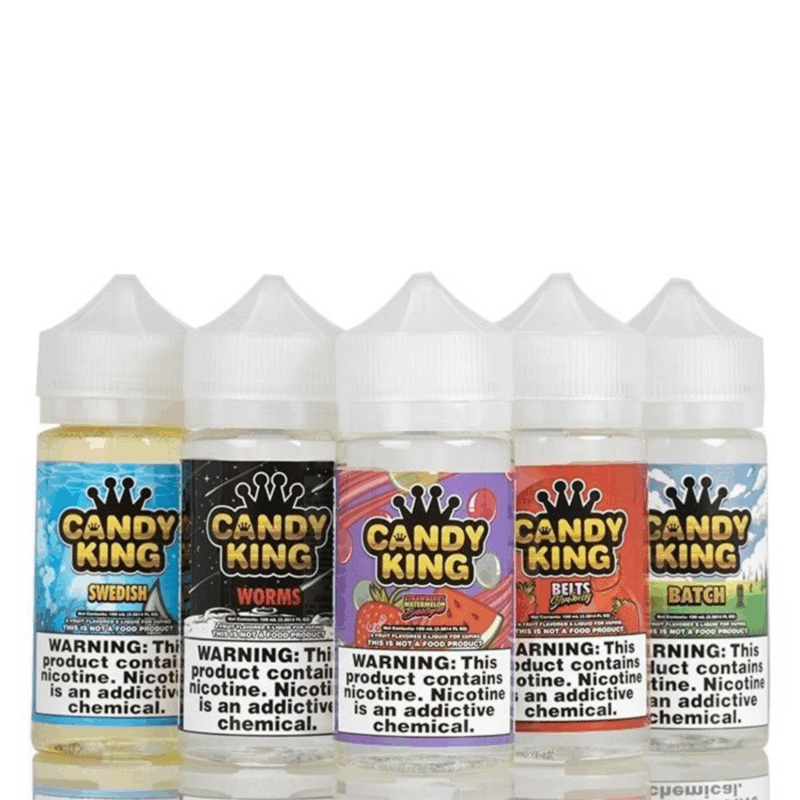
Evolving Demands in Biopharma Drug Product and the Role of Fill & Finish Operations
As the focus of drug development shifts from traditional small molecules to biologics, the demands on fill and finish operations in sterile drug manufacturing have escalated. Today’s biologics – ranging from fusion proteins and monoclonal antibodies to cell & gene therapies – require exceptional control over aseptic filling, driven by their sensitivity and high value.Unlike chemically stable small molecules, biologics are often structurally delicate, highly sensitive to temperature, shear stress, and particulate contamination.1
Biologics introduce new variables. This places sterile filling processes under greater scrutiny. Isolator technology, advanced aseptic barriers, and precision filling systems have become central to quality assurance. Drug Product operations must maintain rigorous sterility assurance, particularly in aseptic filling, where any breach in control could compromise therapeutic efficacy or patient safety. Closed sterile filling environments, and advanced decontamination cycles are essential for biologics manufacturing.
At the same time, batch sizes have shrunk. Personalized therapies and orphan biologic drugs for rare diseases demand small-volume, high-precision fill and finish capabilities. CDMOs must therefore invest in multipotent aseptic filling technologies that can switch rapidly between formats without compromising sterility or efficiency. Vials, pre-filled syringes, and nested container systems are now the standard in many drug programs.
Reliability starts with proven control over sterile drug manufacturing processes. Modern CDMOs must operate with a high level of sterility assurance, and environmental monitoring infrastructure capable of supporting stringent regulatory standards. Equally critical is the ability to handle multiple container types within fill & finish operations, with minimal downtime and maximum consistency. This level of operational flexibility has become a key selection criterion for companies managing fast-changing clinical pipelines and diverse product portfolios.
In this environment, CDMOs that combine isolator-based sterile filling with modular, high-throughput, multi-format capabilities are becoming the preferred choice. They offer more than equipment – they provide assurance. For biopharma companies working with high-value, often time-sensitive products, that assurance is what makes the difference between risk and readiness.
Advancements in Sterile Filling Technology
Sterile filling technology has entered a new era of innovation, driven by the increasing complexity of drug products and the demand for enhanced sterility assurance. Central to this evolution is the transition from conventional cleanroom operations to advanced isolator-based systems. Isolator technology creates a sealed, controlled environment around the critical zones of the filling line.Positive pressure, integrated decontamination cycles using vaporized hydrogen peroxide (VHP), and HEPA-filtered airflow significantly reduce the risk of microbial or particulate contamination. These systems are designed to operate independently of external room classification, creating consistent and repeatable conditions for aseptic filling.
The isolator serves not only as a barrier, but also as a productivity enabler. With reduced dependency on operator intervention, isolator-equipped filling lines improve both safety and compliance while enabling longer continuous runs.2 Operators interact with the process only through glove ports, and product exposure to the surrounding environment is minimized at every stage – from filling through container closure. This is particularly critical when working with high-value biologics that are highly sensitive to contamination and cannot be terminally sterilized.
In parallel, the industry has embraced ready-to-use (RTU) container systems. Pre-sterilized vials, syringes, and cartridges arrive nested and bagged, eliminating the need for in-house washing, depyrogenation, and sterilization. These steps, traditionally a source of both variability and cost, are now fully decoupled from the fill & finish operation. RTU containers are transferred directly into the isolator through rapid transfer systems (RTS) or alpha-beta ports, preserving sterility during loading and allowing for seamless integration with automated filling processes.
Modern fill and finish platforms are increasingly modular. Compact systems now integrate de-bagging, de-nesting, filling, stoppering, and re-nesting into a single enclosed unit. Servo-driven filling mechanisms, peristaltic or rotary piston pumps, and in-line weight checks support high-accuracy dosing, even at low volumes typical of biologics.3 Changeovers are faster, and these systems are configurable for multiple container formats with minimal mechanical changeover, thanks to standardized nests and adaptable software-controlled functions. For biopharma companies managing mixed pipelines of early- and late-stage products, this level of adaptability reduces downtime and ensures that capacity can be dynamically allocated based on clinical or commercial demand.
Evolution of Drug Product Fill & Finish through last decades
The fill and finish process in sterile drug manufacturing has evolved from a labor-intensive, risk-prone operation into a highly controlled and automated discipline. Early systems relied heavily on manual aseptic techniques performed in Grade A cleanroom environments, where human operators carried out critical tasks – including vial handling, filling, and stoppering – within laminar airflow hoods. While these settings offered a controlled environment, they were inherently limited by human variability and the elevated risk of microbial contamination.
As regulatory expectations increased and biologics began to dominate development pipelines, the limitations of open systems became apparent. Industry shifted toward restricted access barrier systems (RABS), which introduced physical separation between operators and product contact areas. While RABS reduced contamination potential, they did not fully eliminate operator dependency or environmental variability.2
The next major advancement came with the widespread adoption of isolator technology. Isolators provide a sealed, automated, and validated environment where aseptic fill & finishoperations occur with no direct human interaction. The internal chamber is decontaminated using vaporized hydrogen peroxide, allowing for reproducible sterility levels beyond what is achievable in open systems. Isolators support extended production runs with fewer interventions, dramatically lowering the risk of contamination and improving batch consistency.
Parallel to improvements in environmental control, automation technologies transformed the physical handling of drug containers. Modern filling lines use servo-driven systems, integrated in-line controls, and fully enclosed transfer systems to process pre-sterilized containers with minimal manual contact. Sensors monitor each critical step, from fill volume verification to stopper positioning and container integrity testing.
This evolution has not only enhanced product quality but also aligned fill and finish systems with increasingly strict regulatory requirements. Agencies now expect continuous environmental monitoring, complete batch traceability, and process validation data that demonstrate control throughout the manufacturing cycle. Automated systems enable biopharma manufacturers to meet these standards efficiently, providing data-rich documentation and improved process robustness.
Future Outlook – Flexible, Scalable, and Integrated CDMO Solutions
Today, sterile filling is no longer an isolated step – it is an integrated, automated, and digitally traceable operation. Its advancement reflects the broader shift toward risk-based, quality-driven manufacturing in the biopharmaceutical industry.
The future of Drug Product fill & finish operations lies inscalable, flexible,and digitally integrated CDMO solutions that combine technical sophistication with risk-based design.4 As the complexity of biopharmaceutical pipelines increases, so too does the need for manufacturing platforms that can rapidly adapt to shifting product requirements. Modern Drug Product service providers are moving decisively toward Quality by Design (QbD) frameworks, supported by thorough risk assessments and in-process controls. Instead of relying solely on end-product testing, QbD strategies embed quality into the manufacturing process from the outset.
Real-time visibility into these parameters allows for rapid deviation management and proactive quality control. Deviations can be traced to their root cause with minimal downtime, and batch release timelines are shortened due to the integrity and accessibility of digital records. Furthermore, this digital integration supports continuous process verification (CPV) and simplifies compliance with global regulatory frameworks that increasingly prioritize data integrity and real-time control.5
Automation and Digitalization in Filling Lines
Fill & finish operations demand a level of precision that manual systems increasingly struggle to meet. Human interventions, no matter how well trainedincrease contamination risk, and introduce variability. Automation, supported by digital infrastructure, addresses these challenges directly by creating a standardized, continuously monitored manufacturing process.
Fully automated filling line execute dosing, stoppering, and container handling through programmed, repeatable sequences. Each unit operation is embedded with sensors that monitor physical parameters such as torque, pressure, speed, and fill weight in real time.6 The removal of manual touchpoints not only improves aseptic integrity but also leads to measurable improvements in process consistency across multiple production batches.
Automated platforms are now outfitted with advanced digital ecosystems. Innovative sensors collect granular data across all unit parameters: temperature gradients, isolator pressures, fill weight accuracy, plunger insertion force, and particle load in the environment. These data streams feed into centralized monitoring systems, often supported by AI-driven analytics platforms capable of anomaly detection, trend analysis, and predictive failure modeling.
The compliance benefits are equally significant. Advanced systems capture time-stamped data for each unit filled, creating electronic batch records (EBRs) that are audit-ready and aligned with current good manufacturing practices (cGMP). Traceability is no longer limited to batch-level summaries but is granular enough to isolate performance trends, correlate deviations, and validate process outcomes at the level of individual units.
Digitalization also supports ongoing regulatory compliance through automated reporting and version-controlled documentation in fill and finish operations. It enables continuous improvement programs by revealing process trends and failure modes over time. As a result, regulatory interactions become more efficient, data-driven, and collaborative.
Regulatory Expectations and Quality Considerations
Regulatory inspections of fill and finish operations place a strong emphasis on sterility assurance, equipment design, process control, and data integrity. To meet these expectations, facilities must demonstrate complete control over all critical aspects of Drug Product manufacturing.
The global regulatory framework for sterile drug manufacturing is unified in its focus on contamination control, process validation, and data integrity, especially during the fill-finish stage. FDA, EMA, and other regulatory bodies such as PMDA, and TGA now require manufacturers to implement science-based, risk-driven aseptic practices supported by robust documentation and repeatable performance.7 Regulatory authorities now expect not just the absence of failure, but active demonstration of control. CDMOs must deliver more than sterility. They must show proof of control, built into every layer of the manufacturing system.
For CDMOs providing fill and finish services, this means operating automated systems inside validated isolator enclosures, applying routine media fills, and maintaining real-time environmental monitoring throughout the process. All equipment and processes must be qualified and supported by data-driven quality systems, including secure digital batch records and clear audit trails. Process deviations, interventions, and trend analyses must be documented and retrievable for inspection at any time.
For example, deviation tracking have to be embedded in the automated fill & finishline system logic. Any process parameter that moves outside of defined control limits isimmediately flagged, logged, and linked to root cause workflows. These alerts reduce the time to resolution, minimize product loss, and enable better decision-making. For quality assurance teams, this means fewer surprises and more structured responses. For regulators, it means transparent access to verifiable process history and corrective action records.
References
- Janghorban M, Kazemi S, Tormon R, Ngaju P, Pandey R. Methods and Analysis of Biological Contaminants in the Biomanufacturing Industry. Chemosensors. 2023; 11(5):298.
- Nieuwenhuizen P. Aseptic Considerations in Formulation, Fill and Finish: Choosing Between Barrier and Isolator Technologies. BioProcess Int. 2021; 19(9i): 1-5.
- Haider J. Automate Aseptic Filling: Closing the System at Full Modularity. PharmTech, 2024; 48(11): 17-19.
- Knurek J, Bednarek M, Zielińska E, Henehan M.Leading European CDMO for Drug Product Manufacturing.Mabion Science Hub; 2025.
- Algorri M, Abernathy MJ, Cauchon NS, Christian TR, Lamm CF, Moore CMV. Re-Envisioning Pharmaceutical Manufacturing: Increasing Agility for Global Patient Access. J Pharm Sci. 2022;111(3):593-607.
- Park M, Safford M, Scheers J, Hammill L, Pleitez D, Jerbi T, Koudji EM, Yelity S, Campion S, Miller MM, Gibb SL, Sargent A. Automation preserves product consistency and quality for the formulation, fill, and finish of T cell-based therapies. Cytotherapy. 2024;26(12):1566-1570.
- U.S. Food and Drug Administration. Sterile Drug Products Produced by Aseptic Processing — Current Good Manufacturing Practice. U.S. Department of Health and Human Services, 2004.













